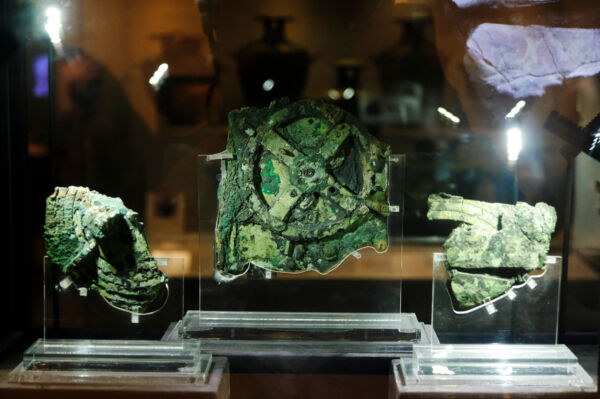For many years, the Antikythera mechanism has been a long-standing mystery that researchers have been trying to unravel. Through the use of statistical analysis and detecting spacetime ripples, a group of researchers have uncovered the secrets behind this ancient mechanical computer, known as the oldest one in the world.
Discovered in the remains of a sunken ship on an island in the Aegean Sea in 1901, the Antikythera mechanism has puzzled archaeologists and scholars for generations. This device, about the size of a shoebox, was crafted in the second century BC and contains at least 30 intricately crafted and precisely positioned gears. By turning external knobs, users could accurately predict future astronomical events such as planetary movements, solar and lunar eclipses, moon phases, and even calculate dates for future Olympic Games. However, the question of whether the device operated based on a lunar calendar or a solar calendar has remained a mystery.
In 2020, X-ray imaging technology revealed a series of evenly spaced holes underneath the damaged “calendar ring” within the device. At that time, researchers could only speculate that the total number of holes might range from 347 to 367 due to the incomplete nature of the ring. Unfortunately, this range covered both a 354-day lunar calendar and a 365-day solar calendar. However, during the winter holiday season last year, a breakthrough was finally made by a research team from the University of Glasgow.
“At the end of last year, a colleague showed me data collected by YouTube creator Chris Budiselic, who was trying to replicate the calendar ring and determine the exact number of holes,” mentioned Professor Graham Woan from the School of Physics and Astronomy in a recent statement.
Woan used Bayesian analysis, a method for dealing with uncertainty and incomplete data problems, to estimate the most likely total number of holes based on the remaining six fragments of the “calendar ring” and their hole positions. Consequently, Woan confidently stated that this calendar ring contained 354 or 355 holes.
Meanwhile, Professor Joseph Bayley from the Institute of Gravitational Research at the university chose a completely different statistical analysis method to help solve this puzzle. In this case, Bayley improved a technique used to detect and evaluate uncertainties existing within a system, such as tiny gravitational ripples in spacetime produced by astronomical events like black hole collisions. The results once again showed that within a circular radius of 77.1mm, the number of holes in the ring was 354 or 355, with an uncertainty of about 1/3mm. Statistical analysis also indicated a difference of only 0.028mm for each hole, demonstrating an astonishing level of precision in the craftsmanship of the Antikythera mechanism from that era.
“This has given me a whole new appreciation for the Antikythera mechanism and the meticulous work that Greek craftsmen put into creating it,” Bayley mentioned in a statement. “The precision of hole positioning required highly accurate measurement techniques and extremely stable practices.”
The research team published their findings in the Horological Journal in July 2024. Considering the 354-day lunar calendar, Woan and Bayley are convinced that the device focused on this method of timekeeping, rather than the solar-based Julian calendar.
Bayley added, “Previous studies have suggested that the ‘calendar ring’ was likely used to track lunar calendars. The two techniques we used in this study significantly enhance the likelihood of this hypothesis.”
For Woan, the methodology employed by the team to unveil the mystery of the Antikythera mechanism’s “calendar ring” holds a poetic allure. He expressed, “Applying the same techniques used in contemporary cosmological research to interpret a mechanical device that aided ancient astronomers in observing celestial phenomena nearly two thousand years ago is a marvelously exquisite connection.”

